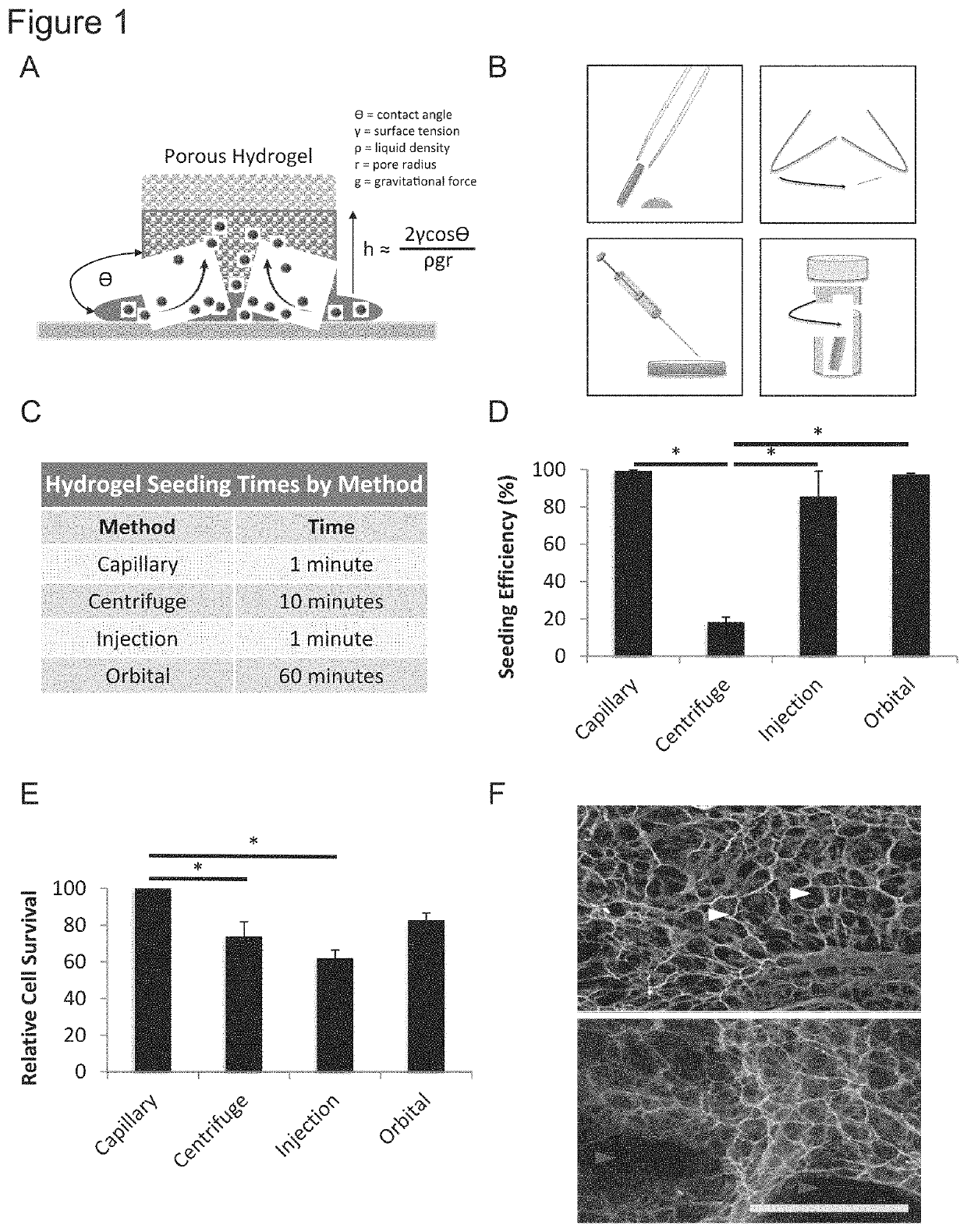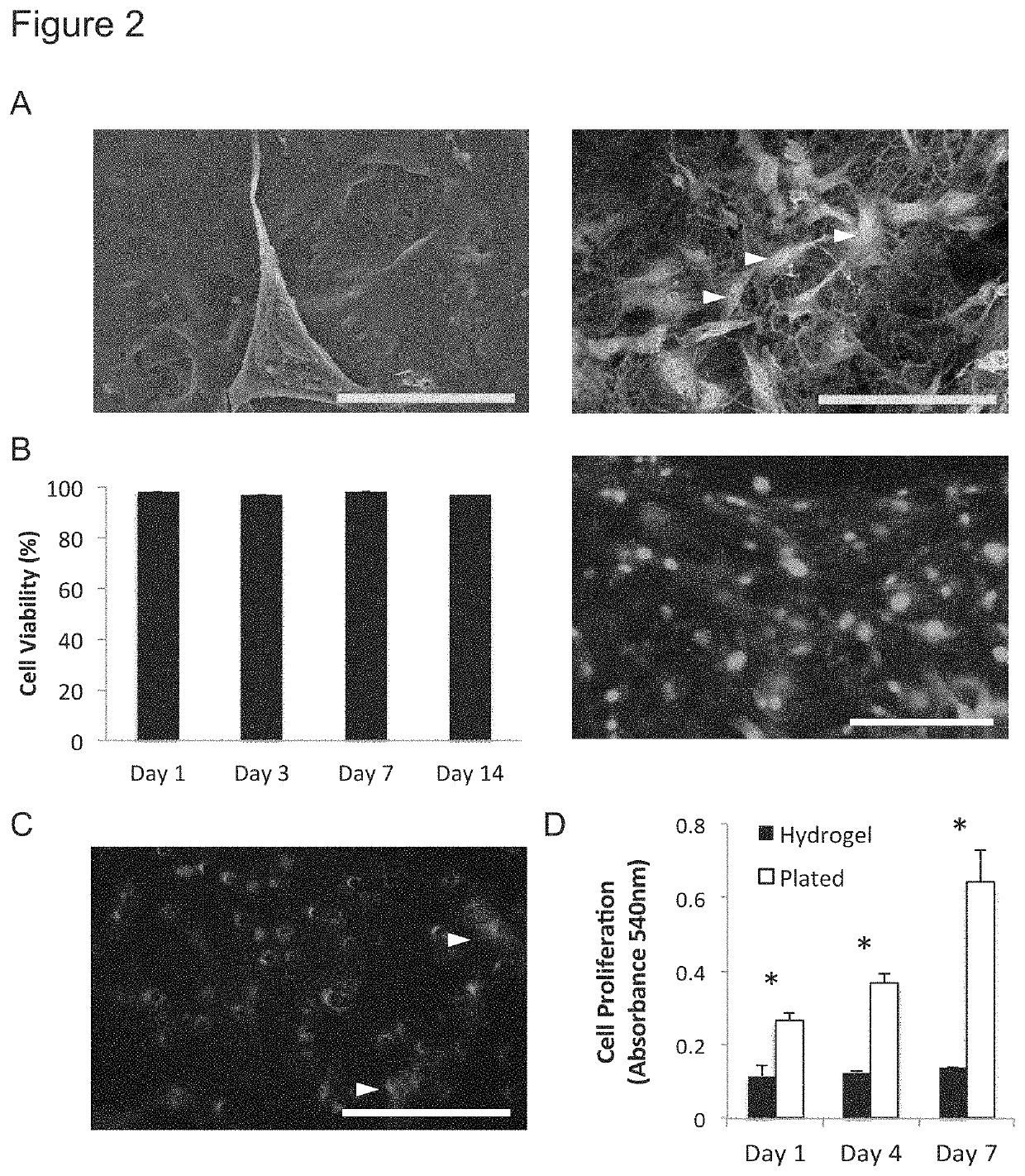Efficient stem cell delivery into biomaterials using capillary driven encapsulation
a stem cell and biomaterial technology, applied in the field of wound healing and tissue regeneration methods, can solve the problems of chronic wound formation, increased risk, and large volume of bone marrow harvest, and achieve the effects of increasing seeding efficacy, rapid capillary force, and high seeding density
- Summary
- Abstract
- Description
- Claims
- Application Information
AI Technical Summary
Benefits of technology
Problems solved by technology
Method used
Image
Examples
example 1
[0076]Preparation of Pullulan Hydrogel with 5% Collagen Domain[0077]1. Pullulan (1 g), sodium trimetaphosphate (STMP) (1 g) and potassium chloride (KCl) (1 g) were mixed thoroughly in 4.5 mL of MilliQ water. The mixture was vortexed repeatedly until a clear solution was obtained. To the mixture maintained on ice 0.625 mL of 1N sodium hydroxide (NaOH) was added. The above viscous solution was immediately transferred and spread evenly on a 100 sq.cm flat teflon-sheet tray. The gel was allowed to crosslink and dry overnight at room temperature in a sterile environment.[0078]2. The dried hydrogel was washed with sterile water to remove the excess NaOH. The washing step was repeated until the pH of the wash reaches neutral and remains constant[0079]3. 50 mg of collagen type-1 (5 mL of 10 mg / mL (Collagen I, high concentration rat tail 100 mg) and 150 mg Polyvinyl pyrolidine of (molecular weight 10,000 D) are poured on a patterned PDMS membrane under vacuum. After drying, the film was peel...
example 2
[0081]To achieve capillary seeding with the method of this invention, cells are suspended as a single cell solution in saline and pipetted onto hydrophobic patterned wax paper (or superhydrophobic material). A biomaterial (5% collagen in pullulan) is immediately placed on top. Cells are absorbed actively into the pores of the scaffold by capillary, hydrophobic and entropic forces, which becomes visibly saturated within 1 minute (completely hydrated with negligible media / cells remaining on wax paper upon lifting of the hydrogel). The concept of ‘capillary origami’ also plays a role in this approach, wherein dynamic liquid surface tension is used to shape solid materials. In the setting of capillary cell seeding of bioscaffolds, this surface tension theoretically deforms the scaffold microstructure around the absorbed cell / liquid mix, promoting long-term cell retention within the scaffold (see FIG. 8).
[0082]Embodiments of the invention can be varied. For example depending on the appli...
PUM
 Login to View More
Login to View More Abstract
Description
Claims
Application Information
 Login to View More
Login to View More - R&D
- Intellectual Property
- Life Sciences
- Materials
- Tech Scout
- Unparalleled Data Quality
- Higher Quality Content
- 60% Fewer Hallucinations
Browse by: Latest US Patents, China's latest patents, Technical Efficacy Thesaurus, Application Domain, Technology Topic, Popular Technical Reports.
© 2025 PatSnap. All rights reserved.Legal|Privacy policy|Modern Slavery Act Transparency Statement|Sitemap|About US| Contact US: help@patsnap.com



